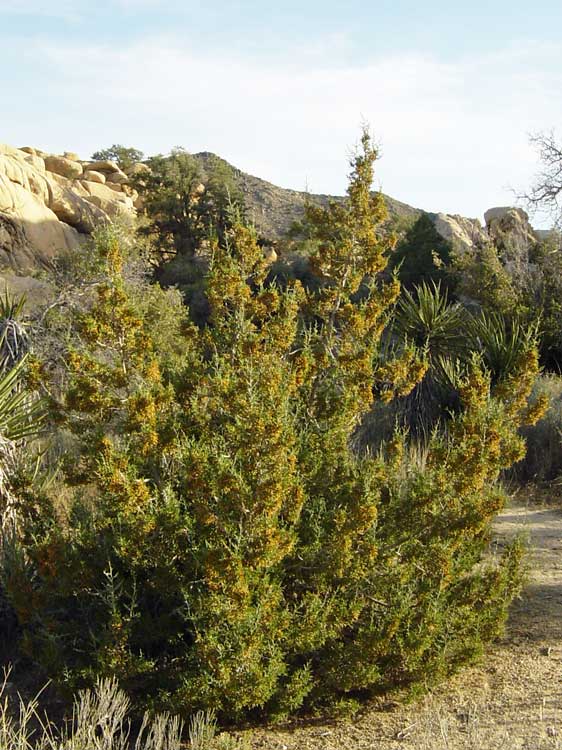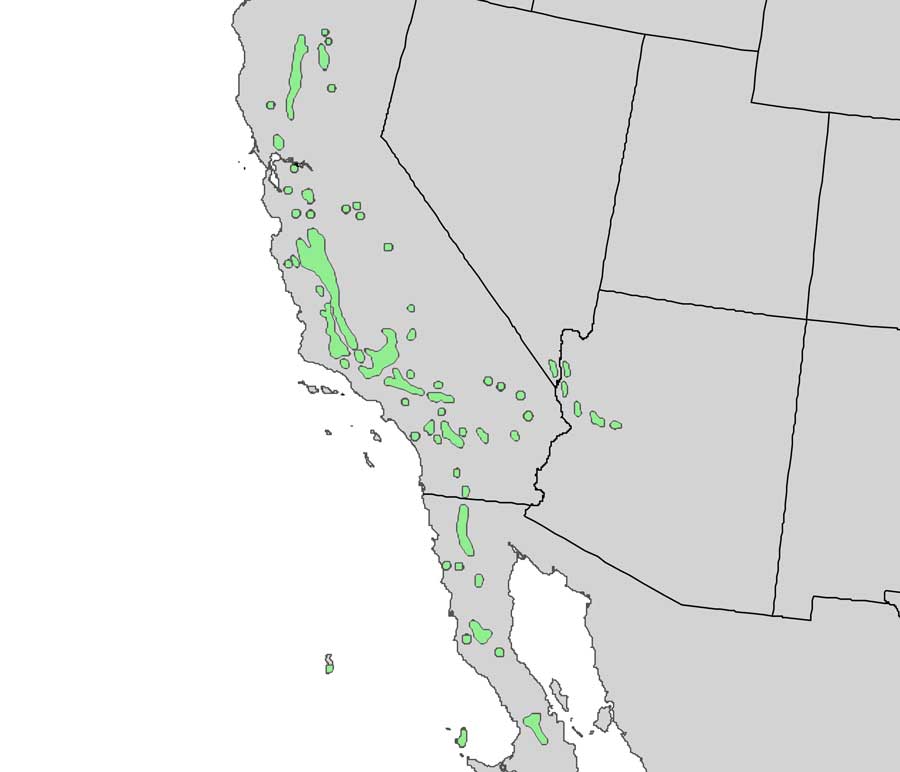Ethnobotany of southern California native plants:
California Juniper (Juniperus californica)

California juniper branches and scaly foliage

credit: Nyenyec (assumed) GFDL, CC-BY-SA-3.0
Juniper tree in Joshua Tree National Park
California Juniper (Juniperus californica)
The California juniper is an attractive conifer tree growing between 150 and 5,200 feet in the coast range of southern California and Baja, Mexico. This juniper is usually between 10-30 feet tall. The tree displays blue-green, scale-like foliage. Its bark has the appearance of thin, shredded paper.
This bark can be broken up and used to smolder a small charcoal made from a bow drill fire. In this manner, the California juniper has helped ignite many primitive campfires.
Small, berry size cones emerge from the juniper. These cones mature into a blueish-brown color and contain a single seed. When the conditions are right, the forest floor surrounding a California juniper will be covered with these juniper berries.
Juniper benefits
California juniper was a popular medicinal plant and food source for California Native Americans. The Mahuna, Kawaiisu, Kumeyaay, Cahuilla, Costanoan and Apache people all relied on this Juniper tree for multiple uses.
The Costanoan people of central California brewed a tea made from juniper leaves. This concoction served as general painkiller and induced sweating.
The Kumeyaay brewed a tea with the papery bark and scaly leaves to help remedy a hangover. A similar tea was also drunk to help lower blood pressure.
The shredded bark made for good thatch material when the Kawaiisu were constructing a roof. Additionally, the strong wood from Juniper trunk and branches was used to make kitchen tools and bows.
Juniper berry uses
The Cahuilla people of the Mojave Desert dried juniper berries in the sun. Once dried, they could be stored for long periods of time and used later. These dried berries were then eaten whole. The berries were also ground down into a flour and mixed with water to make bread.
The Kawaiisu and the Costanoans ate fresh picked juniper berries. These berries were also dried and pulverized. It should be noted that, in general, the Juniper berry was not a favorite food. The Kumeyaay, for example, only ate this berry in times of starvation.
The Mahuna people ate juniper berries as a means to treat extreme fevers (for ex. the grippe).

Natural distribution map for California juniper (Juniperus californica)
References:
Bocek, Barbara R. 1984 Ethnobotany of Costanoan Indians, California, Based on Collections by John P. Harrington. Economic Botany 38(2):240-255 (p. 6)
Romero, John Bruno 1954 The Botanical Lore of the California Indians. New York. Vantage Press, Inc. (p. 9)
Please return to our main Ethnobotany of southern California page.
On our main ethnobotany page, we present a clickable list of the southern California native plants that became a part of the culture of Native Americans and early European settlers. These plants were used for medicine, food, shelter, drink, tools and art.
Warning: The information about plants on this website is intended for general educational purposes only. The author of this website accepts no responsibility for problems arising from the user’s misidentification, misuse, or use of plants. Please read the full TERMS associated with this website.
